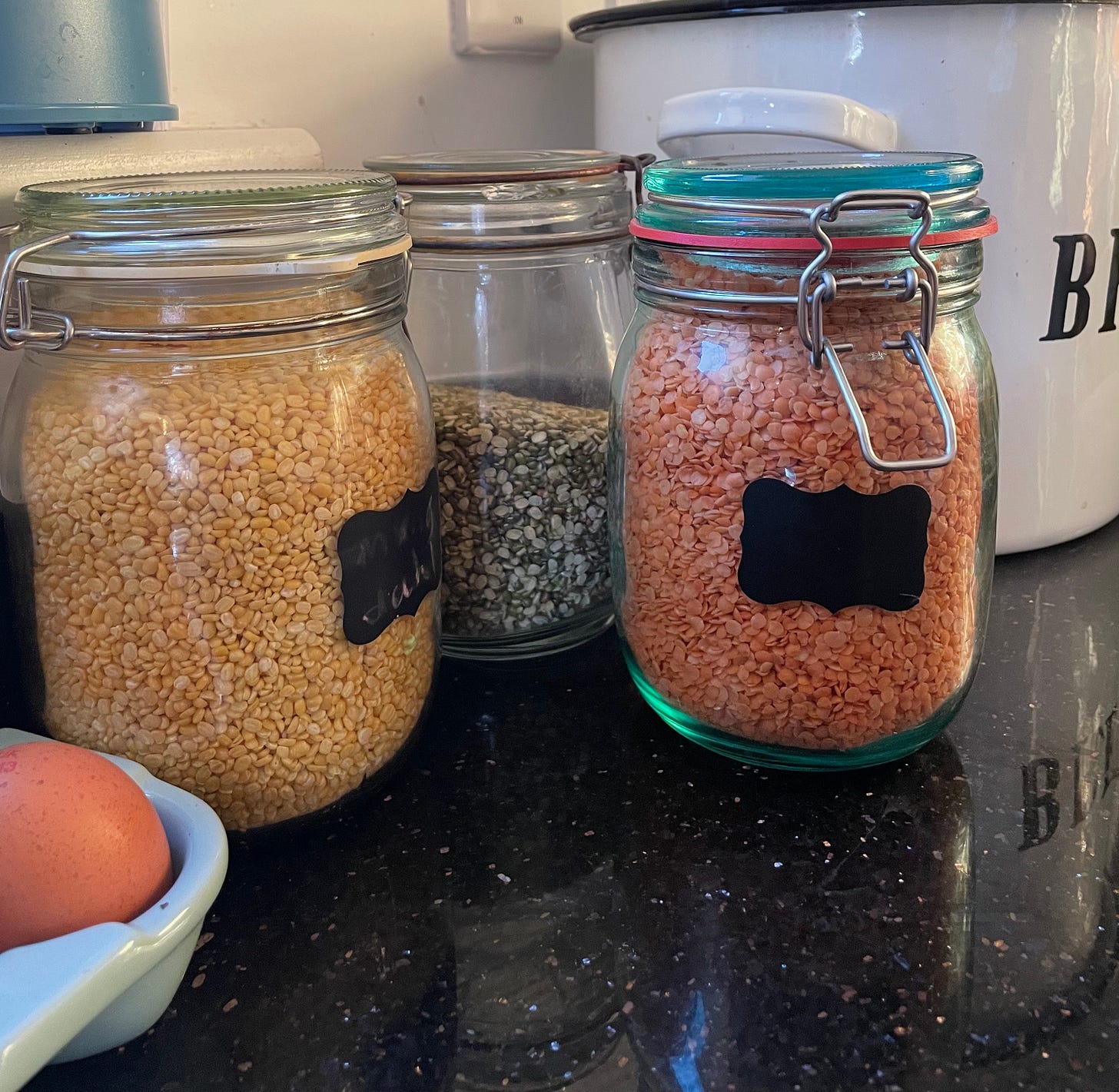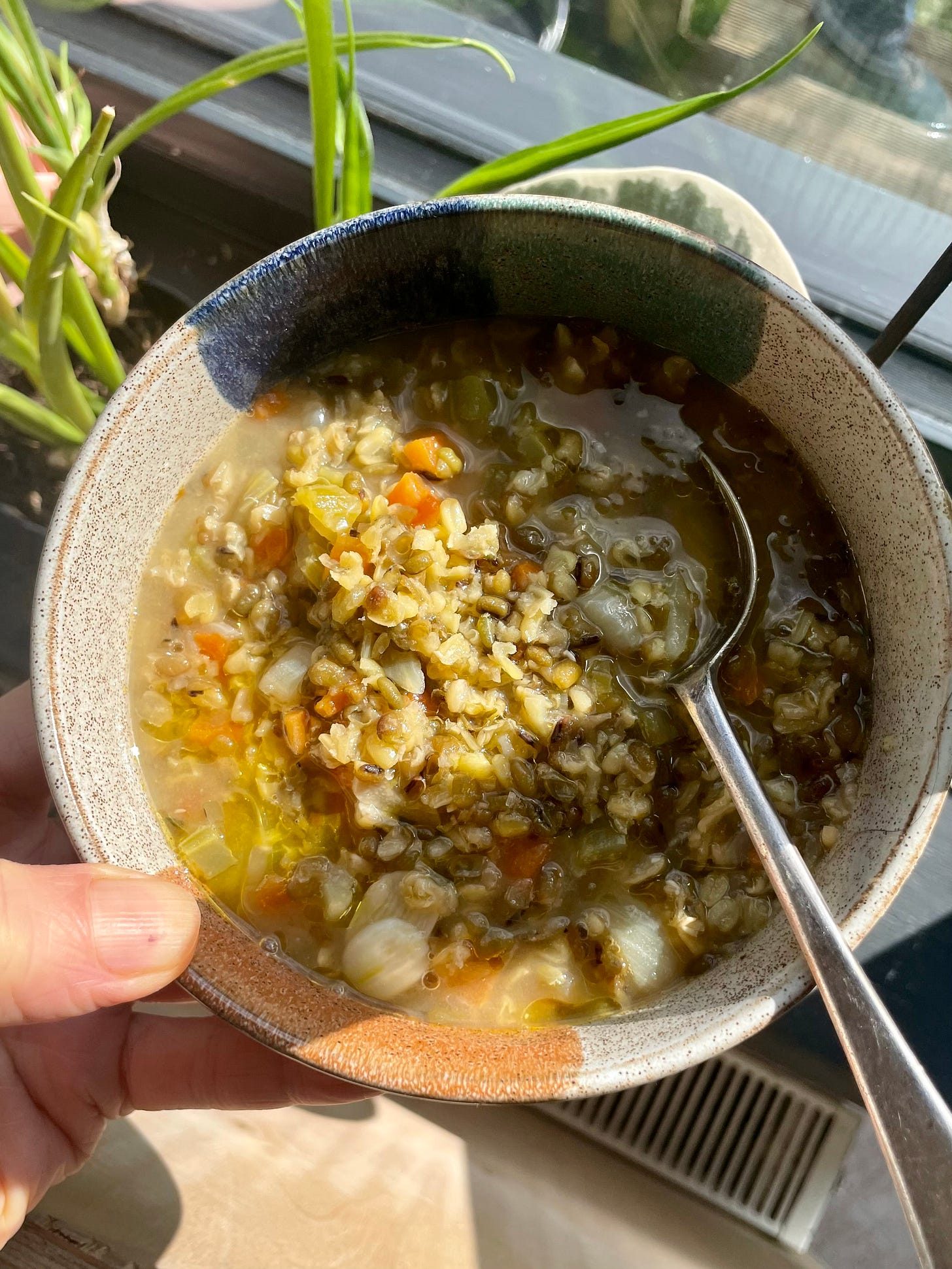More Pulses Please
I've set myself the challenge of eating half a cup of pulses daily in March. Here's why I'm doing it, and why you might want to join me.
I’ve finally made it back to Substack after another long hiatus, but this time I’m here to stay and I’ve got a new name. I’ve been struggling more and more with posting on Instagram with the amount of noise and lack of nuance. I want to be able to write long form and share interesting bits of science and ideas to help you eat well, without needing to use a trending audio or say something provocative to get my thoughts out there.
What I’d really love is to foster a connected community of people who are interested in nutrition and health, minus the overwhelm that seems to circulate around these topics on social media. So here I am trying to do just that, and my opening gambit is writing to you about pulses, why they’re brilliant and why I’m aiming to eat a daily dose in March.
Why I’m going BIG on pulses
One of the things I love about my job as a Dietitian and health writer is the various rabbit holes I end up down when researching for articles and content creation. Recently I was writing about why we all need to eat more fibre and how pulses can help fill the fibre gap. And that’s when I fell into a pulse hole and when I emerged I was committed to eat more. So let me tell you why.
But first a quick reminder: pulses are the dry edible seeds of plants in the legume family, so that means -
chickpeas
lentils
dry peas (like split yellow peas) and
beans
(But not green peas or edamame as they’re harvested when they’re green).
Pulses Plus Points
Pulses are a good source of iron, zinc and folate and a brilliant source of fibre - the latter being a nutrient that 90% of us aren’t eating enough of. Fibre feeds our gut microbes, helps protect heart health and can lower the risk of bowel cancer, so filling the fibre gap is, in my opinion, an easy win for our health.
Pulses are also a great source of plant-based protein, AND they’re a sustainable protein choice too. As well as needing less water and energy inputs than other sources of protein, pulses use the bacteria housed in their roots to draw nitrogen from the air into the soil, where it is shared with other crops. As a result, less synthetic nitrogen fertiliser is required, which is known to be a major source of greenhouse gas emissions.
As a result, pulses generate far fewer greenhouse gas emissions than other foods – per 100 grams of protein, pulses produce around 0.84kg of emissions, versus 4.21 kg for eggs, 5.7 kg for poultry and 49.89 kg for beef.
If that wasn’t enough, pulses are also affordable, filling (thanks to the protein fibre combo) and have a long shelf life, which means less food waste. I have pulses on my shelf that have been there for months (or even a year or so), and as I understand it, there’s no issue with this, they might just take longer to cook.
40% of UK adults eat 0 pulses
Despite this CV of awesome benefits, research shows 40% of UK adults don’t eat any pulses AT ALL. Average intakes of dried pulses is 10 grams a week (that’s a spoonful) and canned beans and pulses 28 grams a week.
And though I already eat pulses a couple of times a week, reading more on their sustainability credentials made me want to challenge myself to make them a bigger part of my diet.
Why half a cup?
The UK’s Eat Well Guide (a visual guide to a healthy diet) tells us to ‘Eat more beans and pulses’ but there’s no guide as to how much and there’s no consensus between countries. But I did find a paper that tried to work out a target that would improve the nutrient density of a healthy diet.
In this paper the researchers came up with 100 grams of cooked pulses (about half a cup) a day. This felt achievable to me so it’s what I’m aiming for. And it’ll provide an extra 6-7 grams of fibre a day (remembering that most of us need to increase our fibre intake by about 10 grams a day).
The Challenge
This 30 day challenge is simply to include half a cup of cooked pulses a day in some form. If you want to eat a bigger portion, go for it. There’s no rules on not repeating the same one either, e.g. over a few days if you’ve opened a can of lentils for example. Using recipes is great of course (and I started with this brilliantly simple lentil soup from Claire Thompson which was delicious), but equally to make this as doable as possible, I’ll be keeping it simple. So that means throwing some canned chickpeas in a soup, beans into a lunchtime quesadilla and so on.
Other ideas:
Add half a cup of ready-to-eat lentils to a lunchtime salad
If you’re cooking bolognese, go 50:50 mince and green or puy lentils
Make a tub of hummus and use for snacks with chopped vegetables or crackers
Add chickpeas to a curry kit
Try black beans in a chilli served with brown rice and salsa
Switch up egg mayo for a smashed chickpea salad sandwich with gherkins, mayo and mustard
Questions questions
There’s PLENTY more to talk about when it comes to eating pulses (will eating more pulses make me fart more? what about FODMAPs? What will we do after the 30 days? What about lectins?) but in the spirit of getting this post out there, I’ll stop here. But if you have questions then feel free to pop them in the comments and I’ll do my best to answer.
Are you in?
Hopefully I’ve convinced some of you reading this to join me on this challenge. If I have, you can download a simple chart to tick off your daily progress below - one plain, one colourful because printing plain can be easier. I’ve made space in each box for you to note down what pulse you had, if you feel like it.
If you do join in, of course I’d love to hear fro you And if you’re up for this sort of challenge in the future, I think i’ll make it a regular thing.



